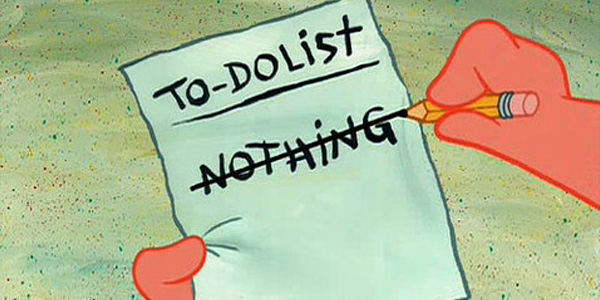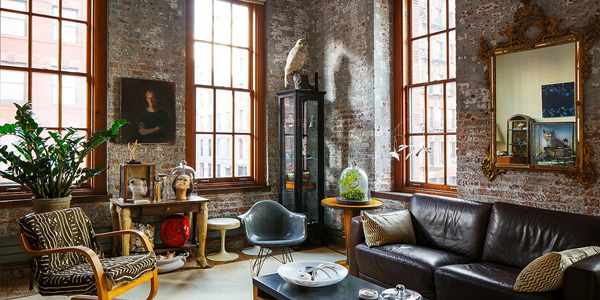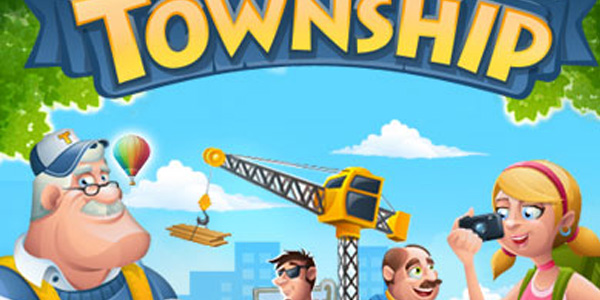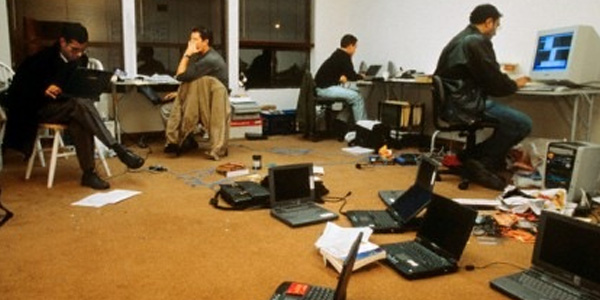The simple answer to the difficult question Part 2: Workflow

As the most shrewd of you have already understood, this is a continuation of my previous article on the theme of procrastination in work. And to those who have just joined us, I would recommend that you first familiarize yourself with the first part, because otherwise, my thoughts will look to you just unconfirmed. By the way, now the title of the article is not 100% true, since the simple answer was only in the first part, and this miracle will not happen. And in general, the article turned out so long that I can only hope for your patience.
It is interesting!
Let me briefly summarize the content of the first article and highlight the following conclusion:
Interest is the king of motivation . Everything else, including monetary motivation - pawns. Someone will say that money sometimes strongly motivated him to do something - to which I will answer that pawns sometimes make strong moves. But when you have a more or less stable cash flow - the game changes and you need something more powerful to combat procrastination. And this is precisely his Majesty Interest.
')
If you ask for a definition of interest in Wikipedia, you can find the following opinion there:
This feeling of capture, fascination, curiosity. The individual experiencing this emotion, there is a desire to explore, intervene, expand the experience by incorporating new information and approach the interest-generating object in a new way. With intense interest, the person feels inspired and lively. It is this revival that provides a link with cognitive and motor activity.Did you hear? Za-ro-van-no-sti. Captivity! This is what is sometimes lacking in work! This is what interests differ from money, long-term goals and other things mundane.
Introduction to processes
So, returning to our problem with working procrastination, I immediately want to upset everyone who suggested that the following statements are true, provided that you are not working the first day in this direction:
- I do not have a job, because I chose the wrong area of activity
- I do not work, because the project is not interesting
- I don’t have a job, because the material with which I have to work is poor
Yes, there are boring projects. Yes, there is bad stuff you need to work on. And yes, perhaps in something else, you would have achieved great success. But all these problems are only allergies to the skin that you experience when you overeat peanut butter. The real problem: The crisis of your workflow.
Usually no one thinks about the work process. We consider this a concern of managers, managers, Eychars, the Lord God, but not ours. Freelancers often seem to have no processes at all and these are terms of some mythical “big companies”. But it was not there!
If you work, you perform a systematic activity - you have your own personal workflow. Then a workflow arises between you and the customer / manager. There is a specific workflow between you and every other member of the team. And the more people there are in a team, the more the number of processes between them increases. And only as a result - it forms a common, global worker, not even, the production process - which is already the concern of the higher ranks (the freelancers have no one to pass on, they are managers themselves). And now clearly:
Typical workflows
Since I myself am more involved in design, I will describe typical design workflows. It all starts with the fact that the customer (whether internal (represented by the manager) or external) throws off the TK designer. Or fills some brief. The designer asks typical questions: is there a corporate identity? what wishes for colors? Then he says, “OK! will be in three days, ”opens Photoshop, well, and tries to figure out something from what is. He comes up with a couple of ideas, tries a couple of options, chooses the best one and sends it to the customer for approval. Receives edits to the project, gets depressed , completes what they require and quietly exhales.
Just imagine if in some game there was such a "fascinating" gameplay. Would she have at least one fan? That's the same thing. Now take a look at how you work and try to imagine what kind of game would have come from this.
How to build your workflows so that it is interesting? We turn to practical advice. That usually helps me. Getting started!
Tip 1: Take your projects
First of all, stop separating your projects from yourself. This project ceases to be the project of the customer from the moment he transfers the care of him to you. Now this is your personal project.
If good and interesting projects so drag you away with your head and you easily become a part of them, then with curves and boring ones or simply with those “to which the soul does not lie”, things are completely different.

They can be compared with the old house, which suddenly you got from the late rich uncle. Yes, the project was not chosen by you, but the layout is not the same as you would have done, but the corners are cobwebs in the corners, and the furniture is tasteless. But this is better than nothing. And you move there. Now you are the rightful owner of this house. And although at first, he will seem to you a stranger, unpleasant, rejecting, find the strength to look at him better, give him a chance and you will understand that it is yours and for the moment - you should take care of him, for your sake benefits.
When it becomes clear that you will not have any other housing in the near future, your first thought would be to demolish everything to the devil’s roaring bulldozer and build it again, but then you will realize that Uncle Customer has hardly left any money to you. And it’s time for you to be located in one of the bedrooms of this dilapidated building with your mattress, as the owner of the apartment you are renting is already threatening you with terrible reprisal if you don’t eat immediately!

And here begins the real magic: you are left alone with your house and the need to somehow live in it, limited in time and money. What will you do? That's right - you will begin to equip it as close as possible to your ideals, as far as you have enough resources. And after the first little success, you will notice that the light of enthusiasm lights up in you! You say to yourself: yes, this house is just a nightmare! but this is my home! and i will make it better for myself! And so, part of the trash was taken out, and the new furniture surprisingly well combined with unpainted, torn walls. And even my uncle's stuffed owl fit perfectly into the new interior.
Of course, you hardly have time to finish everything to the end. Somewhere there will be an old finish or furniture. But believe me, you will no longer pay attention to this. You will like the result. And I know what I'm talking about, because Once I moved to my apartment in this way, making repairs with my own hands, in a terrible rush.
That is - in such projects it will not be possible to remake everything from scratch, maximum - you will be able to convince team members to fix the most critical places. Then you have to take the limited resources that you have and make the maximum possible with them. Soon you will get used to this project and it will become completely close to you, yours. And although it will be difficult for you to make other people do something, everything that concerns your part will bring you to perfection. You will be disturbed. People and circumstances. And the lack of resources, of course. But having separated the project from the customer and having accepted it as your own, you will bravely bend your line. The main thing is not to try to change circumstances, expand restrictions, increase resources, or put pressure on other participants — but act as effectively as possible in all of this.
So back to the game examples. Our example is a construction simulator. Your past processes in it most likely looked like this: You exhaustingly choose a game card for a long time, turning your nose away from one and the other, then not finding anything that you would like, choosing the simplest one, and starting the game. The gameplay lies in the fact that you are constantly discussing with various characters, squeezing out of them those decisions that would favorably affect your construction. And also you are endlessly trying to expand your starting gaming resources, which is natural, it does not work for you, because they are firmly recorded in the map conditions. And building ... What building? Construction does not interest you. In the end, you will be greeted by the screen “Mission failed. To try one more time?"
What should actually happen:

You are no longer engaged in a long card selection - any conditions, any challenge is interesting for you, this is a chance to prove yourself. What's more - you start to enjoy limited, complex projects. You understand that starting resources cannot be changed, but this only makes you more interesting, because there are no games without rules. You are engaged in construction, looking for optimal solutions in the conditions that you have. And you achieve a result that pleases you, take a screenshot and put it in a photo album. Your processes at this stage are very different.
Everything! The focus is very simple and you already own it.
Tip 2: Start correctly

Since we have decided on whose project it is, now it is obvious who should set the tasks at the stage of your work. What could be more boring than reading other people's TK or briefs? It discourages interest from the very beginning! Understand that your work begins much earlier than you begin your typical duties. Your customer most likely does not understand the specifics of your work, and even if he understands (technical director, for example), he definitely does not think identically to you. Therefore, we must begin to work out our own TZ independently. And even such a formal stage can be fascinating for you! And at the same time, it will help you to accept the project as your own.
This is a research process. And you do not know what might be waiting for you here, because even in the most boring project, you can dig up something interesting for yourself. Any small detail or puzzle, which you have long wanted to do, but there was no suitable project. Imagine that the customer does not exist. You are free to do whatever you want with this material. What would you do? Form your vision of the project - how would you like it. It is interesting. And your vision can be much wider than the vision of the customer. Do not limit yourself. If a project, for example, about guitars - and you see how it expands to all instruments - can not be silent. If the idea of guitars cultivating in your head becomes an idea about drums - you can not be silent.
Sometimes you will be able to change the project beyond recognition at the stage of formation of the TZ and the next steps themselves will become more interesting - you will realize your plans and ideas. Do not be afraid that your ideas will not be accepted or will not agree with you - your vision will change in the process, connecting with the opinions of other team members, merging into the natural process of forming a collective product. But you will have your own vision, not a dry TZ of someone else’s project. Sometimes it may happen that you offer cool things, but at the moment there will be no resources for them (we return to the situation from the first piece of advice) - accept it as a condition of the game and look for other ideas, although it is possible that the customer himself will ask you to implement those functions later what you come up with. Thus, you develop the project and provide yourself with the reputation of a person who cares who you can rely on, and at the same time you can count on future orders for the implementation of those features that are beyond the scope of the current project.
No need to pull out the reins of power from someone for whom the formulation of tasks and writing TK is firmly fixed. If this happened, then just connect to the process as much as you are allowed. Just share your thoughts and ask. Affect the situation as much as possible.
Tip 3: Communicate

What's the coolest thing about garage startups? That's right - freedom of expression. The programmer does as he sees. The designer comes up with what he wants. This is free creativity, shoulder to shoulder. And through endless discussions, sifting off ideas and versions, disputes - a whole, healthy product is obtained.
It is not known where this all disappears when the company grows. But your task is to return yourself to the state of a startup. Most of the other members of the team with whom you directly work are likely to pick up this behavior from you - you will be on the same wavelength.
Those who sit in silence do their job - and then give the final result to the public to play chess with themselves. And this, you see, is pretty boring. Much more interesting - multiplayer. Remember that the ideal implementation does not exist - and boldly roll out everything you do for commenting. This feedback is vital for you. Make your work alive - do not be afraid of discussions and disputes. Argue on a can of cola with a coder that you finish pulling the layout on the engine by the end of the day. Have fun.
Moreover, a product that has been worn in one head is initially dysfunctional and overly subjective. Do not be afraid to allow someone into your world, in any case, you can always reasonably reject his opinion - as yours reject. It is normal practice to throw unsuccessful drafts in the trash.
The product - "suffered" in disputes and discussions - is a healthy product. Thus, in your gameplay, a new game cycle appears - communication.
Tip 4: Use the task list and version history
Use some Basecamp to set tasks and keep a version history. These things are necessary not only for their obvious application, but also for the fact that you would see the development of your project. Motion. Progress. So that you can mark for yourself what you have done. It supports you morally, helps the interest not to fade. You evaluate your work, look at what happened yesterday and today and wonder how cool everything has changed with your powers. You should see visually the results of your actions as if they were playing a game.
Tip 5: Experiment
Do your main task no more than 80% of the time. The rest is spent on experiments within the project. Free creativity. Experimenting is fun, it develops. Then you can always show their results to members of the team / customer, maybe they will appreciate it and it will even be included in the release. You can even create a separate list for experiments, in which to write down all the ideas that can be tested in the project.
Conclusion
In summary, you should break out of your standard workflow. Do not be alone with your toolkit more than 60% of the time, but it is not important to spend part of it in communication with colleagues in the canteen or skype, in the smoking room or basecamp. You need to experiment to be free in your work. You need to visually see your results and you have to turn other people's projects into your own. And this is just what my fantasy lacks. You can create and build your work the way you want. The main thing that you were interested.
for errors in drugs will be very grateful
Source: https://habr.com/ru/post/168849/
All Articles